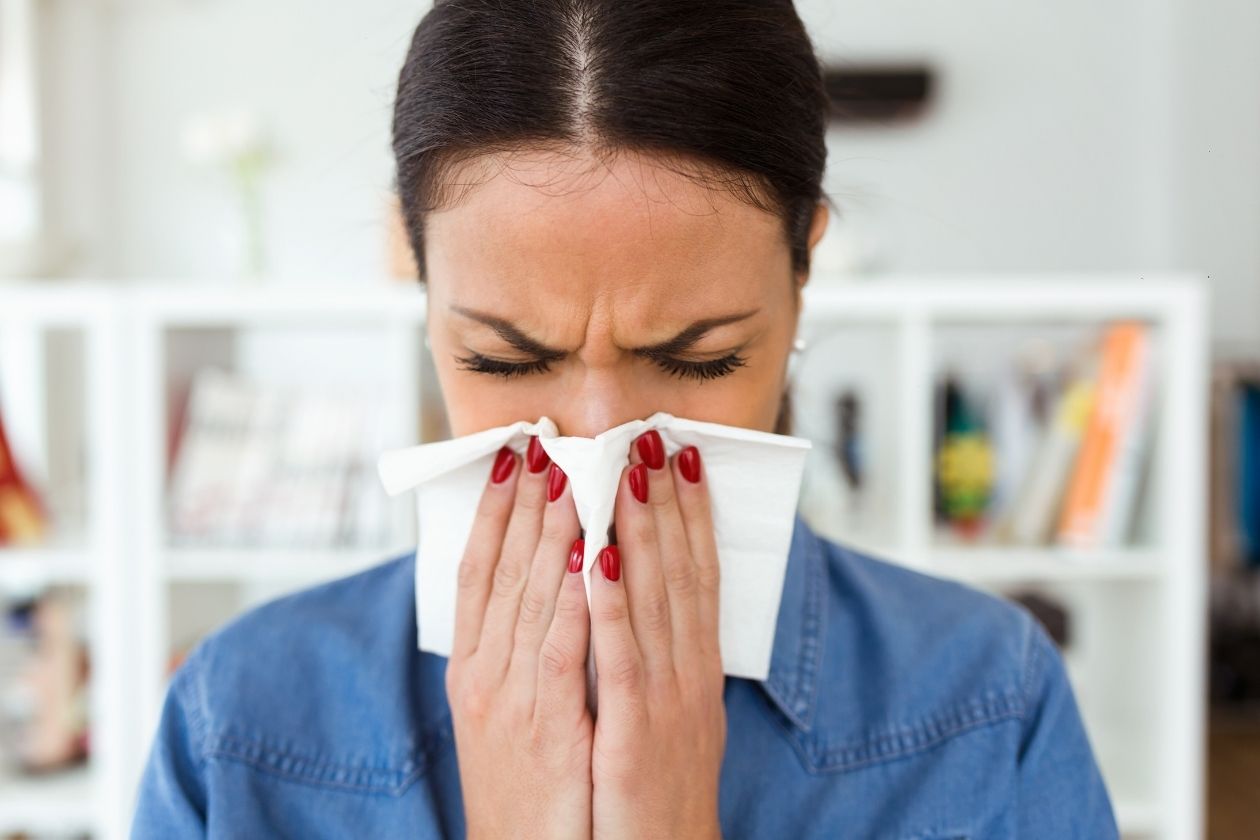It’s almost spring. Before long, the trees will have their leaves, the birds will be chirping, and the temperatures will be warm again. We all look forward to spring, but there’s one common downside to the warmer weather and greener landscape—allergens, both indoor and out. Allergies can transform your spring into one that’s full of sneezing, coughing, and itching instead of relaxation and recreation. These tips for preventing and reducing indoor allergens will help you reclaim your spring by defeating common indoor allergens at their source.
Table of Contents
What Are the Symptoms of Indoor Allergens?
The symptoms of indoor mold, dust, and pet allergies generally consist of:
- Sneezing
- Runny or stuffy nose
- Red, itchy, or teary eyes
- Wheezing, coughing, tightness in the chest, and shortness of breath
- Itching
If your allergy symptoms are detrimental to your everyday life, you’ll want to reduce the number of allergens in your house. With fewer allergens in the home, you’ll be able to enjoy springtime without constant fits of sneezing or coughing.
How Do I Reduce and Prevent Indoor Allergens?
Luckily, these tips for preventing and reducing indoor allergens can help you eliminate the pesky allergens in your home.
Clean Your House
Vacuum with a HEPA filter to reduce dust mites, pet dander, and other common allergens in your home. It’s best to do this weekly. When you’re dusting your home, use a microfiber or electrostatic cloth instead of your standard duster. They’ll pick up and trap the dust instead of moving it from place to place. Vacuuming and dusting will stir up dust, so wear an N95 filter mask if you’re allergic.
Avoid Pet Dander
You’ll find pet allergens in the saliva and dander of your dogs, cats, and other household pets. To reduce the amount of dander that they produce, bathe animals like dogs and cats once a week. The easiest way to prevent pet allergens is by avoidance. You don’t have to stop petting or caring for your animals, but you should take the proper precautions before and after doing so. Once you’re done handling your pet, wash your hands with soap and water to prevent your symptoms from flaring up. Banning your pets from the bedroom and vacuuming the carpet will also help.
Keep Moisture Out
Moisture is one of the leading causes of mold growth in the home. There’s a reason you’re more likely to find mold in areas like your kitchen, bathroom, and basement. They’re teeming with moisture! You can reduce the amount of moisture in these areas of your home by regularly cleaning them and allowing them to air out, either by opening the windows or installing an exhaust fan. While mold spores might cause your allergy symptoms to flare up, they’re not inherently dangerous. Mold, on the other hand, is detrimental to your health. If there’s physical mold growth in your home, call in a mold remediation specialist and have it removed, lest your symptoms take a turn for the worst.




